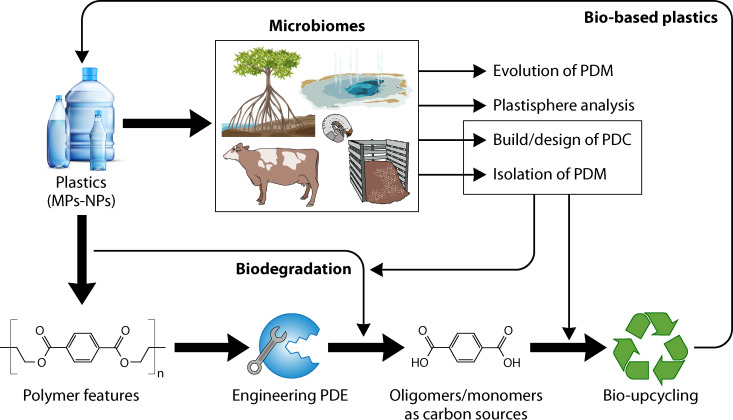FIG 2.
Main topics of discussion, ideas, conclusions and perspectives (and the interplay between them) after the MENZYPOL-NET 2021 workshop (“Microbial Synthesis and Degradation of Polymers: Toward a Sustainable Bioeconomy”). Briefly, the relevance of studying the impact of microplastics (MPs) and nanoplastics (NPs) in different microbiomes (e.g., mangrove soil, agricultural soils, hot springs, compost, and cow rumen) is highlighted. These studies could give new insights into (i) the functional and ecological understanding of the plastisphere and (ii) the microbial evolution driven by plastic pollution. In addition, these ecosystems can be an excellent source of novel plastic-degrading microbes (PDM) or consortia (PDC), which could play key roles in a prospective plastic bioconversion systems (e.g., biodegradation and bio-upcycling of plastic-derived monomers). However, a comprehensive understanding of polymer features (e.g., type of backbones, additives, molecular weight, and hydrophobicity), in addition to efficient engineering of plastic-degrading enzymes (PDE), is required to improve these systems.

